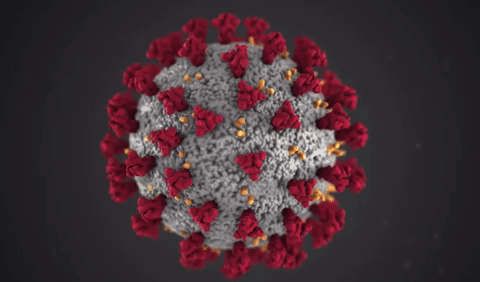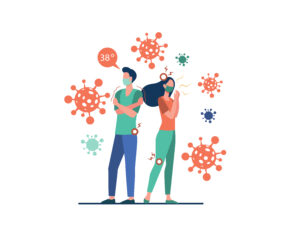A new virus has broken out and driven the world into a state of the pandemic. This newly identified novel coronavirus disease that has spread throughout the different nations is called “Coronavirus disease 2019” or abbreviated as COVID-19. Unlike the other coronaviruses that commonly (and had previously) circulated among humans, we are yet to find the answers on how to win the fight and with the hope of obliterating the pandemic threat completely.
What You Should Know About Covid-19
 On February 11, 2020, it was officially announced by the World Health Organization that humankind is facing a 2019 novel coronavirus outbreak. This infectious disease is a new type of human coronavirus wherein the first coronavirus being identified in the mid-1960s. Coronaviruses are a large family of viruses that is common in people, and many different species of animals (such as cattle, camels, and bats). However, it is rarely possible that animal coronaviruses can infect people and may cause respiratory illnesses. It ranges from common colds to more severe conditions like Severe Acute Respiratory Syndrome (SARS) and the Middle Eastern Respiratory Syndrome (MERS).
On February 11, 2020, it was officially announced by the World Health Organization that humankind is facing a 2019 novel coronavirus outbreak. This infectious disease is a new type of human coronavirus wherein the first coronavirus being identified in the mid-1960s. Coronaviruses are a large family of viruses that is common in people, and many different species of animals (such as cattle, camels, and bats). However, it is rarely possible that animal coronaviruses can infect people and may cause respiratory illnesses. It ranges from common colds to more severe conditions like Severe Acute Respiratory Syndrome (SARS) and the Middle Eastern Respiratory Syndrome (MERS).
Coronaviruses are named for the crown-like spikes on their surfaces and are grouped into four main types of coronaviruses: referred as “alpha”, “beta”, “gamma” and “delta”. People all around the world can be infected by common coronaviruses such as:
- 229E (alpha coronavirus)
- NL63 (alpha coronavirus)
- OC43 (beta coronavirus)
- HKU1 (beta coronavirus)
However, coronaviruses that infect animals can evolve and become new human coronaviruses, wherein the recent examples are the following:
- MERS-CoV (the beta coronavirus that causes Middle East Respiratory Syndrome, or MERS)
- SARS-CoV (the beta coronavirus that causes severe acute respiratory syndrome, or SARS)
- SARS-CoV-2 (the novel coronavirus that causes coronavirus disease 2019, or COVID-19)
Trivia: Did you know that “CO” stands for corona, “VI” for virus and “D” for disease, hence producing the abbreviated term “COVID-19; though it is formerly referred to as “2019-nCoV”. Viruses are named by the International Committee on Taxonomy of Viruses (ICTV) while being in communication with the WHO. The process of naming is commonly based on the genetic structure of the virus in relation to facilitating the development of diagnostic tests, vaccines, and medicines.
There are many types of human coronaviruses but COVID-19 is a (new) coronavirus that has not been previously seen in humans and the exact source of this virus is not yet fully in grasp. So at the moment, as many countries have taken measures, the entire world is indeed buzzing with uncertainty and questions.
The Start of the Pandemic
Where has COVID-19 started and where has it spread to? The original epicenter of the new coronavirus outbreak is in Wuhan China in December 2019. According to WHO, current evidence suggests that COVID-19 is caused by SARS-CoV-2.
On January 30, 2020, the Department of Health (DOH) has reported the very first case of COVID-19 in the country with a 38-year old female Chinese national. The first local transmission was then recorded and confirmed on the 7th of March, 2020.
Presently, our country is ranked with the second-highest number of confirmed COVID-19 cases in Southeast Asia. As the months continue, we have been grappling with the virus and it has evolved into a more alarming situation as the communities in the different provinces addressed rising infections.
Knowing the Risks
It is important to be informed so you can safeguard yourself from the health risks of the current pandemic. With that in mind, it is with the utmost need to arm yourself with the knowledge of how it can be acquired, and how the illness is transmitted.

You may get infected by COVID-19 if you’ve been exposed to the following situations below:
- Symptoms can range from mild illness to pneumonia. People with coronavirus may experience symptoms such as fever, coughing, a sore throat, and shortness of breath. Other symptoms may also include runny nose, headache, muscle or joint pains, nausea, diarrhea, vomiting, loss of sense of smell, altered sense of taste, loss of appetite, and fatigue. Some people may recover easily while others may get sick very quickly. These symptoms can start to show up anywhere from two to 14 days after exposure to the virus.
- Close contact with a person who is primarily infected by the virus. Standing close, in arm’s length, to a suspected person with COVID-19 (someone that may show signs of infection) may potentially bring risk to your health.
- Being exposed to respiratory droplets. If you are not wearing a face mask and within a close radius of an infected person, you may be easily get infected by the respiratory droplets that might have traveled through the air when an infected person coughs, sneeze or talks.
- Having underlying medical conditions may pose a higher risk of getting infected. People of any age (such as pregnant women and children) are in danger from the threat of the virus. People with chronic conditions or compromised immune systems are also at risk. However, the level of severity of becoming infected is higher for senior citizens and people who have serious underlying medical conditions.
- Assessing your health condition and what you feel today can prevent the risk of spreading the virus. If you are feeling unwell and showing the symptoms, it is important to seek medical help. Separate yourself from other people and call ahead for medical attention because COVID-19 symptoms can range from mild to severe illness or sometimes with no symptoms at all (asymptomatic case).
How to Protect Yourself
Everyone is at risk of getting COVID-19 so it is important to know how you can protect yourself from it. As of the present date, there is no vaccine yet to protect against this pandemic. The best way to secure your health and your family is to avoid being exposed to the risks brought about by the virus.
- Stay at home and avoid physical contact as much as possible. In case you need to go out to acquire household essentials, practice social distancing. However, it is best to buy groceries, shop, and complete banking transactions online.
- Wear face masks or face shields that can cover your nose and mouth when in public settings.
- Always clean and disinfect your hands because you may also be able to get it by touching surfaces or object that has been exposed to the virus. It may then be transmitted to you once you’ve touched your mouth, nose, or eyes. It is best to practice washing your hands with soap and water for at least 20 minutes.
- Keeping an alcohol-based sanitizer (which contains at least 60% alcohol) in your bag or always bringing it with you is highly recommended.
- Get deliveries and take-out for your food cravings. Let us keep in mind that we have to limit in-person contact as much as possible. You must also avoid public transport and ride-sharing.
- Familiarize yourself with the new normal. Although the transition from face-to-face class engagement to digital encounters as powered by online platforms (particularly Zoom meetings) has not been the easiest adjustment. Batangas Eastern Colleges, for the love of learning, takes part in the present educational set-up as proposed by the Department of Education, the Online Distance Learning. We believe that regardless of the current challenges, learning mustn’t be taken for granted. #BEacuseLeArningCONtinues at BEC, there are different ways a Beacon can still experience a sense of normalcy when it comes to learning.
One of the big questions (which we are sure to expect from everyone) is what will be our lives look like once the pandemic is over? It is best to stay informed with the current news of COVID-19 and be alert. And when we do return to an in-person semester, let us truly take the advantage of the opportunities to learn and grow, not just as a student but also as a person of our community along for the betterment of our country.
Our experience with the coronavirus pandemic has given us the training in flexibility and enables us to consider how to reclaim our tomorrow. Now is the time to think ahead – look beyond the post-COVID-19 future. We need to shake the feeling of being trapped in the present and trick time by overcoming this challenging time. Humanity will weather this crisis and let us be comforted by the thought that we can do it with proper planning for the future.

